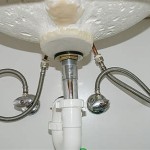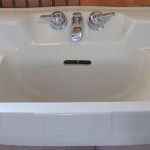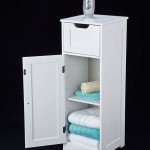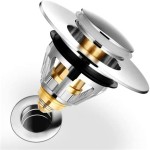How to Fix a Bathroom Sink Faucet
A leaky or malfunctioning bathroom sink faucet can be a frustrating nuisance. While it may seem like a daunting task, fixing a faucet can often be done with minimal effort and materials. Here's a step-by-step guide to help you troubleshoot and repair common faucet issues.
Identifying the Problem
Before you start dismantling your faucet, it's important to identify the source of the problem. This will help you determine the appropriate repair method.
- Dripping or leaking faucet: This can be caused by worn-out washers, O-rings, or seals.
- Hard-to-turn handles: This may be due to corrosion or mineral buildup in the cartridge or valve.
- Water flow problems: Low water pressure or fluctuating water temperature can indicate a problem with the aerator or cartridge.
Tools and Materials
Once you've identified the problem, gather the necessary tools and materials:
- Adjustable wrench
- Philips and flathead screwdrivers
- Allen wrench (if applicable)
- Replacement parts (such as washers, O-rings, or a cartridge)
- Plumber's putty
- Rags or towels
Step-by-Step Repair Guide
1. Shut Off the Water Supply
Locate the water supply valves under the sink and turn them clockwise to shut off the water.
2. Remove the Aerator
If the issue is related to water flow, remove the aerator by unscrewing it with an adjustable wrench or a dedicated aerator tool.
3. Replace Washers or O-Rings
For dripping faucets, replace worn or damaged washers or O-rings. Use an adjustable wrench to remove the handle, then use a screwdriver to remove the valve stem and replace the O-ring or washer.
4. Replace the Cartridge
If the faucet is hard to turn or has fluctuating water temperature, the cartridge may need to be replaced. Remove the handle and unscrew the cartridge with an adjustable wrench.
5. Repair or Replace the Valve Seat
In some cases, the valve seat (where the cartridge or stem meets the faucet body) may need to be repaired or replaced. This requires removing the cartridge or stem and using a valve seat wrench or resurfacing tool.
6. Reassemble the Faucet
Once you've replaced the necessary parts, reassemble the faucet in reverse order. Tighten all connections securely, but avoid overtightening.
7. Test the Faucet
Turn on the water supply and check if the faucet is functioning properly. If it still leaks or malfunctions, further troubleshooting or professional assistance may be necessary.
Tips
- Use plumber's putty to seal connections and prevent leaks.
- If the faucet is heavily corroded, consider replacing it with a new one.
- If you're not comfortable performing the repair yourself, call a licensed plumber.
Conclusion
Fixing a bathroom sink faucet can be a straightforward task with the right tools and instructions. By following the steps outlined in this guide, you can diagnose the problem and repair your faucet effectively, saving time and money on professional repairs.

How To Fix A Bathroom Faucet 14 Steps

How To Fix A Bathroom Faucet 14 Steps

How To Replace Your Bathroom Faucet Plumbcraft Series With Penny

Replacing A Bathroom Faucet Fine Homebuilding

Simple Ways To Fix A Leaky Delta Bathroom Sink Faucet

Diy How To Replace A Bathroom Sink Faucet Remove Install

How To Fix A Leaky Faucet True Value

How To Get The Gunk Out Of Your Faucet

How To Fix Loose Sink Faucet

5 Reasons Your Faucet Is Dripping Water How To Fix It







